#Web Scraping Retail Data
Explore tagged Tumblr posts
Text
Unlocking the Power of eCommerce Scraping Services: A Deep Dive into Web Scraping Retail Data
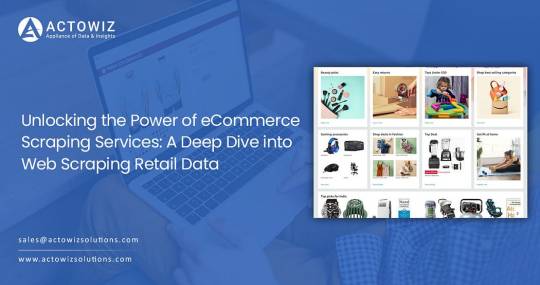
In the dynamic world of eCommerce, data is king. To gain a competitive edge, businesses need access to up-to-date and relevant information about products, prices, customer reviews, and market trends. This is where eCommerce scraping services come into play.
In this blog, we will explore the fascinating world of eCommerce data scraping and how it can revolutionize your business.
What is eCommerce Data Scraping?
eCommerce data scraping, also known as web scraping retail data, is the process of extracting information from various eCommerce websites automatically. This data can include product details, pricing information, customer reviews, stock availability, and more. The scraped data is then structured and organized for analysis, helping businesses make informed decisions.
The Benefits of eCommerce Data Scraping:
Competitive Intelligence: eCommerce scraping services allow businesses to monitor competitors’ prices, product offerings, and customer reviews in real-time. This helps in adjusting your strategies to stay ahead in the market.
Price Optimization: With access to pricing data from multiple sources, businesses can optimize their pricing strategies to attract more customers while maintaining healthy profit margins.
Product Catalog Expansion: Web scraping eCommerce data enables businesses to rapidly expand their product catalog by adding new products from different websites without manual data entry.
Customer Insights: Analyzing customer reviews and feedback from eCommerce websites can provide valuable insights into customer preferences and pain points, helping improve products and services.
Inventory Management: eCommerce data scraping can also help in monitoring stock availability, ensuring you never run out of popular products.
Challenges of eCommerce Scraping:
While eCommerce data scraping offers numerous advantages, it also comes with some challenges:
Website Structure Changes: eCommerce websites frequently update their designs and structures, which can break scraping scripts. Regular maintenance is required to adapt to these changes.
Legal and Ethical Considerations: Scraping data from websites without permission may infringe on copyright and terms of service. It’s essential to be aware of and comply with legal and ethical guidelines.
Data Quality: Ensuring the accuracy and quality of scraped data can be challenging, as it often requires data cleaning and validation processes.
Choosing the Right eCommerce Scraping Service:
When selecting an eCommerce scraping service, consider the following factors:
Data Quality: Look for a service that provides high-quality and accurate data.
Scalability: Ensure the service can handle your data volume requirements.
Compliance: Verify that the service complies with legal and ethical standards.
Customization: Choose a service that allows customization to meet your specific data needs.
Conclusion: eCommerce scraping services are powerful tools for businesses seeking a competitive advantage in the online marketplace. They provide access to valuable data that can inform pricing strategies, product offerings, and customer engagement. However, it’s essential to use these services responsibly, respecting legal and ethical boundaries. When used effectively, eCommerce data scraping can transform your business and drive growth in an increasingly competitive eCommerce landscape.
#Ecommerce scraping services#Ecommerce Data Scraper#Web Scraping Retail Data#Scrape Ecommerce Data#Retail Scraper
0 notes
Text
How Web Scraping is Used for Scraping E-Commerce Data from Walmart – The World’s Biggest Retail Store?

In the ever-expanding landscape of e-commerce, data reigns supreme. Every click, hover, and purchase holds valuable insights that can inform strategic decisions and drive business growth. Amidst this data gold rush, web scraping emerges as a powerful tool, offering businesses the ability to extract and analyze vast amounts of data from online sources. In this blog post, we'll delve into how web scraping is utilized to extract e-commerce data from Walmart, the world's largest retail store.
Understanding Web Scraping
Before we delve into its application, let's briefly understand what web scraping is. Put simply, web scraping involves extracting data from websites. It allows users to automate the process of gathering information by sending requests to web pages, parsing the HTML or other structured data on those pages, and extracting the desired information.
The Power of E-Commerce Data
In the fiercely competitive e-commerce landscape, access to accurate and timely data is crucial for gaining a competitive edge. E-commerce giants like Walmart generate massive amounts of data every second, including product information, pricing data, customer reviews, and more. Analyzing this data can provide valuable insights into market trends, competitor strategies, and consumer behavior.
Web Scraping at Work: Extracting Data from Walmart
Walmart, with its extensive product catalog and global reach, presents a lucrative opportunity for businesses seeking to gather e-commerce data. Here's how web scraping is used to extract data from Walmart's website:
Product Information Extraction:
Web scraping allows businesses to extract detailed product information from Walmart's website, including product names, descriptions, prices, images, and specifications. This data can be used for competitive analysis, pricing optimization, and product comparison.
Price Monitoring and Dynamic Pricing:
One of the key applications of web scraping in e-commerce is price monitoring. By scraping Walmart's website regularly, businesses can track changes in product prices and monitor competitor pricing strategies. This data can inform dynamic pricing algorithms, allowing businesses to adjust their prices in real-time to remain competitive.
Review and Sentiment Analysis:
Web scraping enables businesses to extract customer reviews and ratings from Walmart's website. Sentiment analysis techniques can then be applied to analyze the sentiment of these reviews, providing insights into customer satisfaction, product quality, and areas for improvement.
Inventory Management:
For businesses selling products on Walmart's platform, web scraping can be used to monitor inventory levels and availability. By regularly scraping product pages, businesses can ensure they have up-to-date information on stock levels, allowing them to manage their inventory more efficiently and avoid stockouts.
Market Research and Trend Analysis:
Web scraping can also be used for market research and trend analysis. By aggregating data from Walmart's website, businesses can identify popular products, emerging trends, and consumer preferences. This information can inform product development, marketing strategies, and inventory planning.
Overcoming Challenges and Ethical Considerations
While web scraping offers immense benefits for businesses, it's not without its challenges and ethical considerations. Websites like Walmart often employ measures such as rate limiting, CAPTCHA challenges, and IP blocking to prevent automated scraping. Additionally, businesses must ensure compliance with relevant laws and regulations, including data privacy laws and terms of service agreements.
Conclusion
In conclusion, web scraping is a powerful tool for extracting e-commerce data from Walmart, the world's largest retail store. By leveraging web scraping techniques, businesses can gain valuable insights into market trends, competitor strategies, and consumer behavior. However, it's important to approach web scraping responsibly, taking into account ethical considerations and legal requirements. With the right approach, web scraping can unlock a treasure trove of data that can drive business success in the dynamic world of e-commerce.
0 notes
Text
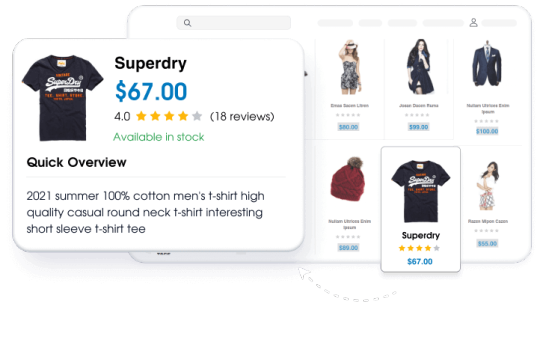
E-commerce data scraping provides detailed information on market dynamics, prevailing patterns, pricing data, competitors’ practices, and challenges.
Scrape E-commerce data such as products, pricing, deals and offers, customer reviews, ratings, text, links, seller details, images, and more. Avail of the E-commerce data from any dynamic website and get an edge in the competitive market. Boost Your Business Growth, increase revenue, and improve your efficiency with Lensnure's custom e-commerce web scraping services.
We have a team of highly qualified and experienced professionals in web data scraping.
#web scraping services#data extraction#ecommerce data extraction#ecommerce web scraping#retail data scraping#scrape#retail store location data#Lensnure Solutions#web scraper#big data
1 note
·
View note
Text
E-Commerce Data Scraping Services - E-Commerce Data Collection Services
"We offer reliable e-commerce data scraping services for product data collection from websites in multiple countries, including the USA, UK, and UAE. Contact us for complete solutions.
know more:
#E-commerce data scraping#E-Commerce Data Collection Services#Scrape e-commerce product data#Web scraping retail product price data#scrape data from e-commerce websites
0 notes
Text
📊 Unlocking Trading Potential: The Power of Alternative Data 📊
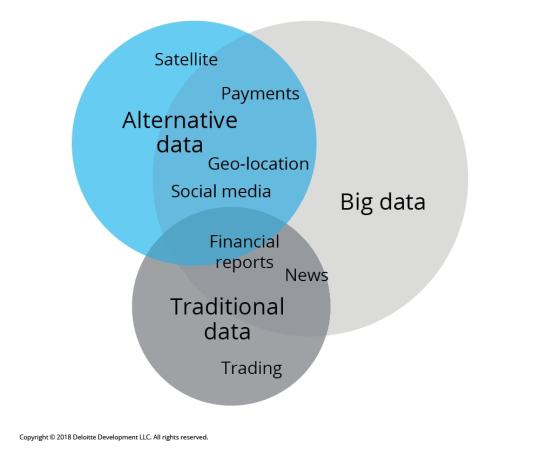
In the fast-paced world of trading, traditional data sources—like financial statements and market reports—are no longer enough. Enter alternative data: a game-changing resource that can provide unique insights and an edge in the market. 🌐
What is Alternative Data? Alternative data refers to non-traditional data sources that can inform trading decisions. These include:
Social Media Sentiment: Analyzing trends and sentiments on platforms like Twitter and Reddit can offer insights into public perception of stocks or market movements. 📈
Satellite Imagery: Observing traffic patterns in retail store parking lots can indicate sales performance before official reports are released. 🛰️
Web Scraping: Gathering data from e-commerce websites to track product availability and pricing trends can highlight shifts in consumer behavior. 🛒
Sensor Data: Utilizing IoT devices to track activity in real-time can give traders insights into manufacturing output and supply chain efficiency. 📡
How GPT Enhances Data Analysis With tools like GPT, traders can sift through vast amounts of alternative data efficiently. Here’s how:
Natural Language Processing (NLP): GPT can analyze news articles, earnings calls, and social media posts to extract key insights and sentiment analysis. This allows traders to react swiftly to market changes.
Predictive Analytics: By training GPT on historical data and alternative data sources, traders can build models to forecast price movements and market trends. 📊
Automated Reporting: GPT can generate concise reports summarizing alternative data findings, saving traders time and enabling faster decision-making.
Why It Matters Incorporating alternative data into trading strategies can lead to more informed decisions, improved risk management, and ultimately, better returns. As the market evolves, staying ahead of the curve with innovative data strategies is essential. 🚀
Join the Conversation! What alternative data sources have you found most valuable in your trading strategy? Share your thoughts in the comments! 💬
#Trading #AlternativeData #GPT #Investing #Finance #DataAnalytics #MarketInsights
2 notes
·
View notes
Text
Tapping into Fresh Insights: Kroger Grocery Data Scraping
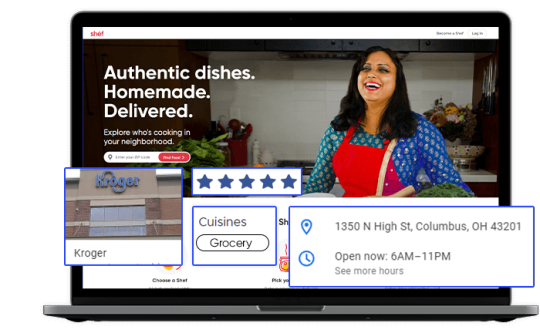
In today's data-driven world, the retail grocery industry is no exception when it comes to leveraging data for strategic decision-making. Kroger, one of the largest supermarket chains in the United States, offers a wealth of valuable data related to grocery products, pricing, customer preferences, and more. Extracting and harnessing this data through Kroger grocery data scraping can provide businesses and individuals with a competitive edge and valuable insights. This article explores the significance of grocery data extraction from Kroger, its benefits, and the methodologies involved.
The Power of Kroger Grocery Data
Kroger's extensive presence in the grocery market, both online and in physical stores, positions it as a significant source of data in the industry. This data is invaluable for a variety of stakeholders:
Kroger: The company can gain insights into customer buying patterns, product popularity, inventory management, and pricing strategies. This information empowers Kroger to optimize its product offerings and enhance the shopping experience.
Grocery Brands: Food manufacturers and brands can use Kroger's data to track product performance, assess market trends, and make informed decisions about product development and marketing strategies.
Consumers: Shoppers can benefit from Kroger's data by accessing information on product availability, pricing, and customer reviews, aiding in making informed purchasing decisions.
Benefits of Grocery Data Extraction from Kroger
Market Understanding: Extracted grocery data provides a deep understanding of the grocery retail market. Businesses can identify trends, competition, and areas for growth or diversification.
Product Optimization: Kroger and other retailers can optimize their product offerings by analyzing customer preferences, demand patterns, and pricing strategies. This data helps enhance inventory management and product selection.
Pricing Strategies: Monitoring pricing data from Kroger allows businesses to adjust their pricing strategies in response to market dynamics and competitor moves.
Inventory Management: Kroger grocery data extraction aids in managing inventory effectively, reducing waste, and improving supply chain operations.
Methodologies for Grocery Data Extraction from Kroger
To extract grocery data from Kroger, individuals and businesses can follow these methodologies:
Authorization: Ensure compliance with Kroger's terms of service and legal regulations. Authorization may be required for data extraction activities, and respecting privacy and copyright laws is essential.
Data Sources: Identify the specific data sources you wish to extract. Kroger's data encompasses product listings, pricing, customer reviews, and more.
Web Scraping Tools: Utilize web scraping tools, libraries, or custom scripts to extract data from Kroger's website. Common tools include Python libraries like BeautifulSoup and Scrapy.
Data Cleansing: Cleanse and structure the scraped data to make it usable for analysis. This may involve removing HTML tags, formatting data, and handling missing or inconsistent information.
Data Storage: Determine where and how to store the scraped data. Options include databases, spreadsheets, or cloud-based storage.
Data Analysis: Leverage data analysis tools and techniques to derive actionable insights from the scraped data. Visualization tools can help present findings effectively.
Ethical and Legal Compliance: Scrutinize ethical and legal considerations, including data privacy and copyright. Engage in responsible data extraction that aligns with ethical standards and regulations.
Scraping Frequency: Exercise caution regarding the frequency of scraping activities to prevent overloading Kroger's servers or causing disruptions.
Conclusion
Kroger grocery data scraping opens the door to fresh insights for businesses, brands, and consumers in the grocery retail industry. By harnessing Kroger's data, retailers can optimize their product offerings and pricing strategies, while consumers can make more informed shopping decisions. However, it is crucial to prioritize ethical and legal considerations, including compliance with Kroger's terms of service and data privacy regulations. In the dynamic landscape of grocery retail, data is the key to unlocking opportunities and staying competitive. Grocery data extraction from Kroger promises to deliver fresh perspectives and strategic advantages in this ever-evolving industry.
#grocerydatascraping#restaurant data scraping#food data scraping services#food data scraping#fooddatascrapingservices#zomato api#web scraping services#grocerydatascrapingapi#restaurantdataextraction
4 notes
·
View notes
Text
Scraping Grocery Apps for Nutritional and Ingredient Data
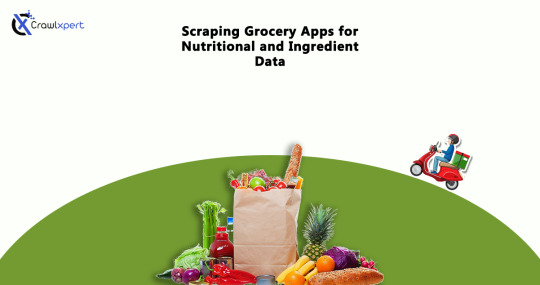
Introduction
With health trends becoming more rampant, consumers are focusing heavily on nutrition and accurate ingredient and nutritional information. Grocery applications provide an elaborate study of food products, but manual collection and comparison of this data can take up an inordinate amount of time. Therefore, scraping grocery applications for nutritional and ingredient data would provide an automated and fast means for obtaining that information from any of the stakeholders be it customers, businesses, or researchers.
This blog shall discuss the importance of scraping nutritional data from grocery applications, its technical workings, major challenges, and best practices to extract reliable information. Be it for tracking diets, regulatory purposes, or customized shopping, nutritional data scraping is extremely valuable.
Why Scrape Nutritional and Ingredient Data from Grocery Apps?
1. Health and Dietary Awareness
Consumers rely on nutritional and ingredient data scraping to monitor calorie intake, macronutrients, and allergen warnings.
2. Product Comparison and Selection
Web scraping nutritional and ingredient data helps to compare similar products and make informed decisions according to dietary needs.
3. Regulatory & Compliance Requirements
Companies require nutritional and ingredient data extraction to be compliant with food labeling regulations and ensure a fair marketing approach.
4. E-commerce & Grocery Retail Optimization
Web scraping nutritional and ingredient data is used by retailers for better filtering, recommendations, and comparative analysis of similar products.
5. Scientific Research and Analytics
Nutritionists and health professionals invoke the scraping of nutritional data for research in diet planning, practical food safety, and trends in consumer behavior.
How Web Scraping Works for Nutritional and Ingredient Data
1. Identifying Target Grocery Apps
Popular grocery apps with extensive product details include:
Instacart
Amazon Fresh
Walmart Grocery
Kroger
Target Grocery
Whole Foods Market
2. Extracting Product and Nutritional Information
Scraping grocery apps involves making HTTP requests to retrieve HTML data containing nutritional facts and ingredient lists.
3. Parsing and Structuring Data
Using Python tools like BeautifulSoup, Scrapy, or Selenium, structured data is extracted and categorized.
4. Storing and Analyzing Data
The cleaned data is stored in JSON, CSV, or databases for easy access and analysis.
5. Displaying Information for End Users
Extracted nutritional and ingredient data can be displayed in dashboards, diet tracking apps, or regulatory compliance tools.
Essential Data Fields for Nutritional Data Scraping
1. Product Details
Product Name
Brand
Category (e.g., dairy, beverages, snacks)
Packaging Information
2. Nutritional Information
Calories
Macronutrients (Carbs, Proteins, Fats)
Sugar and Sodium Content
Fiber and Vitamins
3. Ingredient Data
Full Ingredient List
Organic/Non-Organic Label
Preservatives and Additives
Allergen Warnings
4. Additional Attributes
Expiry Date
Certifications (Non-GMO, Gluten-Free, Vegan)
Serving Size and Portions
Cooking Instructions
Challenges in Scraping Nutritional and Ingredient Data
1. Anti-Scraping Measures
Many grocery apps implement CAPTCHAs, IP bans, and bot detection mechanisms to prevent automated data extraction.
2. Dynamic Webpage Content
JavaScript-based content loading complicates extraction without using tools like Selenium or Puppeteer.
3. Data Inconsistency and Formatting Issues
Different brands and retailers display nutritional information in varied formats, requiring extensive data normalization.
4. Legal and Ethical Considerations
Ensuring compliance with data privacy regulations and robots.txt policies is essential to avoid legal risks.
Best Practices for Scraping Grocery Apps for Nutritional Data
1. Use Rotating Proxies and Headers
Changing IP addresses and user-agent strings prevents detection and blocking.
2. Implement Headless Browsing for Dynamic Content
Selenium or Puppeteer ensures seamless interaction with JavaScript-rendered nutritional data.
3. Schedule Automated Scraping Jobs
Frequent scraping ensures updated and accurate nutritional information for comparisons.
4. Clean and Standardize Data
Using data cleaning and NLP techniques helps resolve inconsistencies in ingredient naming and formatting.
5. Comply with Ethical Web Scraping Standards
Respecting robots.txt directives and seeking permission where necessary ensures responsible data extraction.
Building a Nutritional Data Extractor Using Web Scraping APIs
1. Choosing the Right Tech Stack
Programming Language: Python or JavaScript
Scraping Libraries: Scrapy, BeautifulSoup, Selenium
Storage Solutions: PostgreSQL, MongoDB, Google Sheets
APIs for Automation: CrawlXpert, Apify, Scrapy Cloud
2. Developing the Web Scraper
A Python-based scraper using Scrapy or Selenium can fetch and structure nutritional and ingredient data effectively.
3. Creating a Dashboard for Data Visualization
A user-friendly web interface built with React.js or Flask can display comparative nutritional data.
4. Implementing API-Based Data Retrieval
Using APIs ensures real-time access to structured and up-to-date ingredient and nutritional data.
Future of Nutritional Data Scraping with AI and Automation
1. AI-Enhanced Data Normalization
Machine learning models can standardize nutritional data for accurate comparisons and predictions.
2. Blockchain for Data Transparency
Decentralized food data storage could improve trust and traceability in ingredient sourcing.
3. Integration with Wearable Health Devices
Future innovations may allow direct nutritional tracking from grocery apps to smart health monitors.
4. Customized Nutrition Recommendations
With the help of AI, grocery applications will be able to establish personalized meal planning based on the nutritional and ingredient data culled from the net.
Conclusion
Automated web scraping of grocery applications for nutritional and ingredient data provides consumers, businesses, and researchers with accurate dietary information. Not just a tool for price-checking, web scraping touches all aspects of modern-day nutritional analytics.
If you are looking for an advanced nutritional data scraping solution, CrawlXpert is your trusted partner. We provide web scraping services that scrape, process, and analyze grocery nutritional data. Work with CrawlXpert today and let web scraping drive your nutritional and ingredient data for better decisions and business insights!
Know More : https://www.crawlxpert.com/blog/scraping-grocery-apps-for-nutritional-and-ingredient-data
#scrapingnutritionaldatafromgrocery#ScrapeNutritionalDatafromGroceryApps#NutritionalDataScraping#NutritionalDataScrapingwithAI
0 notes
Text
🚀 Power Your Sales Pipeline with Targeted Web Data Scraping!
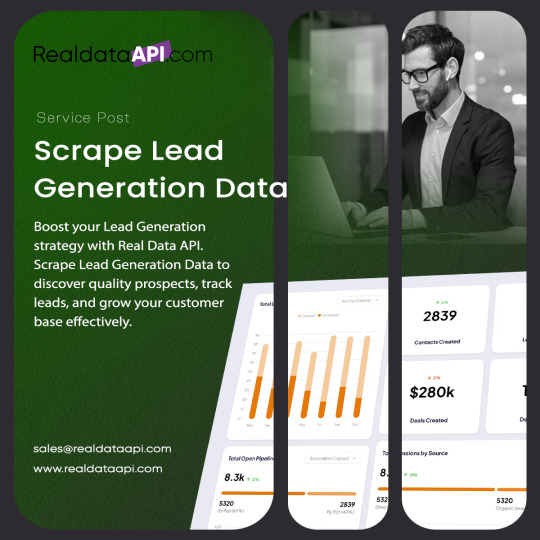
In today’s hyper-competitive markets, finding the right leads faster makes all the difference. RealDataAPI’s Lead Generation Scraping Solution helps you capture high-quality, verified leads directly from public sources like directories, review platforms, job boards, eCommerce sites, and more.
📌 What You Can Do with It: ✅ Scrape contact info, company details, social links, reviews & ratings ✅ Generate geo-targeted B2B or B2C leads from any region ✅ Access industry-specific data: real estate, SaaS, healthcare, retail, etc. ✅ Filter by keywords, niches, and data fields relevant to your outreach ✅ Integrate directly into your CRM, sales tools, or marketing stack
💡 “Lead generation isn’t about more data—it’s about the right data.”
From startups to enterprises, this service helps sales, marketing, and growth teams cut through noise and focus on real prospects with precision.
📩 Contact us: [email protected]
0 notes
Text
eCommerce Scraping Services: A Deep Dive into Web Scraping Retail Data

In the dynamic world of eCommerce, data is king. To gain a competitive edge, businesses need access to up-to-date and relevant information about products, prices, customer reviews, and market trends. This is where eCommerce scraping services come into play.
In this blog, we will explore the fascinating world of eCommerce data scraping and how it can revolutionize your business.
What is eCommerce Data Scraping?
eCommerce data scraping, also known as web scraping retail data, is the process of extracting information from various eCommerce websites automatically. This data can include product details, pricing information, customer reviews, stock availability, and more. The scraped data is then structured and organized for analysis, helping businesses make informed decisions.
The Benefits of eCommerce Data Scraping:
Competitive Intelligence: eCommerce scraping services allow businesses to monitor competitors’ prices, product offerings, and customer reviews in real-time. This helps in adjusting your strategies to stay ahead in the market.
Price Optimization: With access to pricing data from multiple sources, businesses can optimize their pricing strategies to attract more customers while maintaining healthy profit margins.
Product Catalog Expansion: Web scraping eCommerce data enables businesses to rapidly expand their product catalog by adding new products from different websites without manual data entry.
Customer Insights: Analyzing customer reviews and feedback from eCommerce websites can provide valuable insights into customer preferences and pain points, helping improve products and services.
Inventory Management: eCommerce data scraping can also help in monitoring stock availability, ensuring you never run out of popular products.
Challenges of eCommerce Scraping:
While eCommerce data scraping offers numerous advantages, it also comes with some challenges:
Website Structure Changes: eCommerce websites frequently update their designs and structures, which can break scraping scripts. Regular maintenance is required to adapt to these changes.
Legal and Ethical Considerations: Scraping data from websites without permission may infringe on copyright and terms of service. It’s essential to be aware of and comply with legal and ethical guidelines.
Data Quality: Ensuring the accuracy and quality of scraped data can be challenging, as it often requires data cleaning and validation processes.
Choosing the Right eCommerce Scraping Service:
When selecting an eCommerce scraping service, consider the following factors:
Data Quality: Look for a service that provides high-quality and accurate data.
Scalability: Ensure the service can handle your data volume requirements.
Compliance: Verify that the service complies with legal and ethical standards.
Customization: Choose a service that allows customization to meet your specific data needs.
Conclusion: eCommerce scraping services are powerful tools for businesses seeking a competitive advantage in the online marketplace. They provide access to valuable data that can inform pricing strategies, product offerings, and customer engagement. However, it’s essential to use these services responsibly, respecting legal and ethical boundaries. When used effectively, eCommerce data scraping can transform your business and drive growth in an increasingly competitive eCommerce landscape.
#Ecommerce scraping services#Ecommerce Data Scraper#Web Scraping Retail Data#Scrape Ecommerce Data#Retail Scraper
0 notes
Text
Top 7 Use Cases of Web Scraping in E-commerce
In the fast-paced world of online retail, data is more than just numbers; it's a powerful asset that fuels smarter decisions and competitive growth. With thousands of products, fluctuating prices, evolving customer behaviors, and intense competition, having access to real-time, accurate data is essential. This is where internet scraping comes in.
Internet scraping (also known as web scraping) is the process of automatically extracting data from websites. In the e-commerce industry, it enables businesses to collect actionable insights to optimize product listings, monitor prices, analyze trends, and much more.

In this blog, we’ll explore the top 7 use cases of internet scraping, detailing how each works, their benefits, and why more companies are investing in scraping solutions for growth and competitive advantage.
What is Internet Scraping?
Internet scraping is the process of using bots or scripts to collect data from web pages. This includes prices, product descriptions, reviews, inventory status, and other structured or unstructured data from various websites. Scraping can be used once or scheduled periodically to ensure continuous monitoring. It’s important to adhere to data guidelines, terms of service, and ethical practices. Tools and platforms like TagX ensure compliance and efficiency while delivering high-quality data.
In e-commerce, this practice becomes essential for businesses aiming to stay agile in a saturated and highly competitive market. Instead of manually gathering data, which is time-consuming and prone to errors, internet scraping automates this process and provides scalable, consistent insights at scale.
Before diving into the specific use cases, it's important to understand why so many successful e-commerce companies rely on internet scraping. From competitive pricing to customer satisfaction, scraping empowers businesses to make informed decisions quickly and stay one step ahead in the fast-paced digital landscape.
Below are the top 7 Use cases of internet scraping.
1. Price Monitoring
Online retailers scrape competitor sites to monitor prices in real-time, enabling dynamic pricing strategies and maintaining competitiveness. This allows brands to react quickly to price changes.
How It Works
It is programmed to extract pricing details for identical or similar SKUs across competitor sites. The data is compared to your product catalog, and dashboards or alerts are generated to notify you of changes. The scraper checks prices across various time intervals, such as hourly, daily, or weekly, depending on the market's volatility. This ensures businesses remain up-to-date with any price fluctuations that could impact their sales or profit margins.
Benefits of Price Monitoring
Competitive edge in pricing
Avoids underpricing or overpricing
Enhances profit margins while remaining attractive to customers
Helps with automatic repricing tools
Allows better seasonal pricing strategies
2. Product Catalog Optimization
Scraping competitor and marketplace listings helps optimize your product catalog by identifying missing information, keyword trends, or layout strategies that convert better.
How It Works
Scrapers collect product titles, images, descriptions, tags, and feature lists. The data is analyzed to identify gaps and opportunities in your listings. AI-driven catalog optimization tools use this scraped data to recommend ideal product titles, meta tags, and visual placements. Combining this with A/B testing can significantly improve your conversion rates.
Benefits
Better product visibility
Enhanced user experience and conversion rates
Identifies underperforming listings
Helps curate high-performing metadata templates
3. Competitor Analysis
Internet scraping provides detailed insights into your competitors’ strategies, such as pricing, promotions, product launches, and customer feedback, helping to shape your business approach.
How It Works
Scraped data from competitor websites and social platforms is organized and visualized for comparison. It includes pricing, stock levels, and promotional tactics. You can monitor their advertising frequency, ad types, pricing structure, customer engagement strategies, and feedback patterns. This creates a 360-degree understanding of what works in your industry.
Benefits
Uncover competitive trends
Benchmark product performance
Inform marketing and product strategy
Identify gaps in your offerings
Respond quickly to new product launches
4. Customer Sentiment Analysis
By scraping reviews and ratings from marketplaces and product pages, businesses can evaluate customer sentiment, discover pain points, and improve service quality.
How It Works
Natural language processing (NLP) is applied to scraped review content. Positive, negative, and neutral sentiments are categorized, and common themes are highlighted. Text analysis on these reviews helps detect not just satisfaction levels but also recurring quality issues or logistics complaints. This can guide product improvements and operational refinements.
Benefits
Improve product and customer experience
Monitor brand reputation
Address negative feedback proactively
Build trust and transparency
Adapt to changing customer preferences
5. Inventory and Availability Tracking
Track your competitors' stock levels and restocking schedules to predict demand and plan your inventory efficiently.
How It Works
Scrapers monitor product availability indicators (like "In Stock", "Out of Stock") and gather timestamps to track restocking frequency. This enables brands to respond quickly to opportunities when competitors go out of stock. It also supports real-time alerts for critical stock thresholds.
Benefits
Avoid overstocking or stockouts
Align promotions with competitor shortages
Streamline supply chain decisions
Improve vendor negotiation strategies
Forecast demand more accurately
6. Market Trend Identification
Scraping data from marketplaces and social commerce platforms helps identify trending products, search terms, and buyer behaviors.
How It Works
Scraped data from platforms like Amazon, eBay, or Etsy is analyzed for keyword frequency, popularity scores, and rising product categories. Trends can also be extracted from user-generated content and influencer reviews, giving your brand insights before a product goes mainstream.
Benefits
Stay ahead of consumer demand
Launch timely product lines
Align campaigns with seasonal or viral trends
Prevent dead inventory
Invest confidently in new product development
7. Lead Generation and Business Intelligence
Gather contact details, seller profiles, or niche market data from directories and B2B marketplaces to fuel outreach campaigns and business development.
How It Works
Scrapers extract publicly available email IDs, company names, product listings, and seller ratings. The data is filtered based on industry and size. Lead qualification becomes faster when you pre-analyze industry relevance, product categories, or market presence through scraped metadata.
Benefits
Expand B2B networks
Targeted marketing efforts
Increase qualified leads and partnerships
Boost outreach accuracy
Customize proposals based on scraped insights
How Does Internet Scraping Work in E-commerce?
Target Identification: Identify the websites and data types you want to scrape, such as pricing, product details, or reviews.
Bot Development: Create or configure a scraper bot using tools like Python, BeautifulSoup, or Scrapy, or use advanced scraping platforms like TagX.
Data Extraction: Bots navigate web pages, extract required data fields, and store them in structured formats (CSV, JSON, etc.).
Data Cleaning: Filter, de-duplicate, and normalize scraped data for analysis.
Data Analysis: Feed clean data into dashboards, CRMs, or analytics platforms for decision-making.
Automation and Scheduling: Set scraping frequency based on how dynamic the target sites are.
Integration: Sync data with internal tools like ERP, inventory systems, or marketing automation platforms.
Key Benefits of Internet Scraping for E-commerce
Scalable Insights: Access large volumes of data from multiple sources in real time
Improved Decision Making: Real-time data fuels smarter, faster decisions
Cost Efficiency: Reduces the need for manual research and data entry
Strategic Advantage: Gives brands an edge over slower-moving competitors
Enhanced Customer Experience: Drives better content, service, and personalization
Automation: Reduces human effort and speeds up analysis
Personalization: Tailor offers and messaging based on real-world competitor and customer data
Why Businesses Trust TagX for Internet Scraping
TagX offers enterprise-grade, customizable internet scraping solutions specifically designed for e-commerce businesses. With compliance-first approaches and powerful automation, TagX transforms raw online data into refined insights. Whether you're monitoring competitors, optimizing product pages, or discovering market trends, TagX helps you stay agile and informed.
Their team of data engineers and domain experts ensures that each scraping task is accurate, efficient, and aligned with your business goals. Plus, their built-in analytics dashboards reduce the time from data collection to actionable decision-making.
Final Thoughts
E-commerce success today is tied directly to how well you understand and react to market data. With internet scraping, brands can unlock insights that drive pricing, inventory, customer satisfaction, and competitive advantage. Whether you're a startup or a scaled enterprise, the smart use of scraping technology can set you apart.
Ready to outsmart the competition? Partner with TagX to start scraping smarter.
0 notes
Text
Unlock Business Insights with Web Scraping eBay.co.uk Product Listings by DataScrapingServices.com

Unlock Business Insights with Web Scraping eBay.co.uk Product Listings by DataScrapingServices.com
In today's competitive eCommerce environment, businesses need reliable data to stay ahead. One powerful way to achieve this is through web scraping eBay.co.uk product listings. By extracting essential information from eBay's vast marketplace, businesses can gain valuable insights into market trends, competitor pricing, and customer preferences. At DataScrapingServices.com, we offer comprehensive web scraping solutions that allow businesses to tap into this rich data source efficiently.
Web Scraping eBay.co.uk Product Listings enables businesses to access critical product data, including pricing, availability, customer reviews, and seller details. At DataScrapingServices.com, we offer tailored solutions to extract this information efficiently, helping companies stay competitive in the fast-paced eCommerce landscape. By leveraging real-time data from eBay.co.uk, businesses can optimize pricing strategies, monitor competitor products, and gain valuable market insights. Whether you're looking to analyze customer preferences or track market trends, our web scraping services provide the actionable data needed to make informed business decisions.
Key Data Fields
With our eBay.co.uk product scraping, you can access:
1. Product titles and descriptions
2. Pricing information (including discounts and offers)
3. Product availability and stock levels
4. Seller details and reputation scores
5. Shipping options and costs
6. Customer reviews and ratings
7. Product images
8. Item specifications (e.g., size, color, features)
9. Sales history and volume
10. Relevant categories and tags
What We Offer?
Our eBay.co.uk product listing extraction service provides detailed information on product titles, descriptions, pricing, availability, seller details, shipping costs, and even customer reviews. We tailor our scraping services to meet specific business needs, ensuring you get the exact data that matters most for your strategy. Whether you're looking to track competitor prices, monitor product availability, or analyze customer reviews, our team has you covered.
Benefits for Your Business
By leveraging web scraping of eBay.co.uk product listings, businesses can enhance their decision-making process. Competitor analysis becomes more efficient, enabling companies to adjust their pricing strategies or identify product gaps in the market. Sales teams can use the data to focus on best-selling products, while marketing teams can gain insights into customer preferences by analyzing product reviews.
Moreover, web scraping eBay product listings allows for real-time data collection, ensuring you’re always up to date with the latest market trends and fluctuations. This data can be instrumental for businesses in pricing optimization, inventory management, and identifying potential market opportunities.
Best Web Scraping eBay.co.uk Product Listings in UK:
Liverpool, Dudley, Cardiff, Belfast, Northampton, Coventry, Portsmouth, Birmingham, Newcastle upon Tyne, Glasgow, Wolverhampton, Preston, Derby, Hull, Stoke-on-Trent, Luton, Swansea, Plymouth, Sheffield, Bristol, Leeds, Leicester, Brighton, London, Southampton, Edinburgh, Nottingham, Manchester, Aberdeen and Southampton.
Best eCommerce Data Scraping Services Provider
Amazon.ca Product Information Scraping
Marks & Spencer Product Details Scraping
Amazon Product Price Scraping
Retail Website Data Scraping Services
Tesco Product Details Scraping
Homedepot Product Listing Scraping
Online Fashion Store Data Extraction
Extracting Product Information from Kogan
PriceGrabber Product Pricing Scraping
Asda UK Product Details Scraping
Conclusion
At DataScrapingServices.com, our goal is to provide you with the most accurate and relevant data possible, empowering your business to make informed decisions. By utilizing our eBay.co.uk product listing scraping services, you’ll be equipped with the data needed to excel in the competitive world of eCommerce. Stay ahead of the game and unlock new growth opportunities with the power of data.
Contact us today to get started: Datascrapingservices.com
#ebayproductlistingscraping#webscrapingebayproductprices#ecommerceproductlistingextraction#productdataextraction#marketanalysis#competitorinsights#businessgrowth#datascrapingservices#productpricingscraping#datadriven
0 notes
Text
The Role of Custom Web Data Extraction: Enhancing Business Intelligence and Competitive Advantage
Your off-the-shelf scraping tool worked perfectly last month. Then your target website updated their layout. Everything broke.
Your data pipeline stopped. Your competitive intelligence disappeared. Your team scrambled to fix scripts that couldn’t handle the new structure.
This scenario repeats across thousands of businesses using off-the-shelf extraction tools. Here’s the problem: 89% of leaders recognize web data’s importance. But standardized solutions fail when websites fight back with anti-bot defenses, dynamic content, or simple redesigns.
Custom extraction solves these problems. AI-powered systems see websites like humans do. They adapt automatically when things change.
This article reveals how custom web data extraction delivers reliable intelligence where off-the-shelf tools fail. You’ll discover why tailored solutions outperform one-size-fits-all approaches. You’ll also get to see a detailed industry-specific guide showing how business leaders solve their most complex data challenges.
Beyond Basic Scraping: What Makes Custom Web Data Extraction Different
Basic tools rely on rigid scripts. They expect websites to stay frozen in time. That’s simply not how the modern web works.
Today’s websites use sophisticated blocking techniques:
Rotating CAPTCHA challenges.
Browser fingerprinting.
IP rate limiting.
Complex JavaScript frameworks that render content client-side.
Custom solutions overcome these barriers. They use advanced capabilities you won’t find in basic tools.
Here’s what sets custom web data extraction apart:
Tailored architecture designed for your specific needs and target sources.
AI-powered browsers that render pages exactly as humans see them.
Intelligent IP rotation through thousands of addresses to avoid detection.
Automatic adaptation when target websites change their structure.
Enterprise-grade scale monitoring millions of pages across thousands of sources.
Basic tools might handle dozens of sites with hundreds of results. But they require constant babysitting from your team. Every website redesign breaks your scripts. Every new blocking technique stops your data flow.
On the other hand, enterprise-grade custom solutions monitor thousands of sources simultaneously. Their scrapers extract millions of data points with pinpoint accuracy and adapt automatically when sites change structure.
But here’s what really matters: intelligent data processing.
Raw scraped data is messy and inconsistent. Tailored solutions transform this chaos into structured intelligence by:
Cleaning and standardizing information automatically.
Matching products across different retailers despite varying naming conventions.
Identifying and flagging anomalies that could indicate data quality issues.
Structuring unstructured data into analysis-ready formats.
Industry research reveals that the technical barriers are real. 82% of organizations need help overcoming data collection challenges:
55% face IP blocking.
52% struggle with CAPTCHAs.
56% deal with dynamic content that traditional tools can’t handle.
This is why sophisticated businesses partner with experienced providers like Forage AI. We’ve perfected these capabilities over decades of experience and provide you with enterprise-grade capabilities without the headaches of maintaining complex infrastructure.
Now that you understand what makes custom extraction powerful, let’s see how this capability transforms the core business functions that drive competitive advantage.
Transforming Business Intelligence Across Key Functions
Custom web data extraction doesn’t just collect information. It revolutionizes how organizations understand their markets, customers, and competitive landscape.
Here’s how it transforms three critical business intelligence areas:
Real-Time Competitive Analysis
Forget checking competitor websites once a week. Custom extraction provides continuous competitive surveillance. It captures changes the moment they happen.
Your system monitors:
Pricing changes and product launches across competitor portfolios.
Executive appointments and organizational restructuring at target companies.
Regulatory filings and compliance updates from government sources.
Market expansion and strategic partnerships across your industry.
The competitive advantage:
Shift from reactive to proactive strategic positioning.
Respond within hours instead of days when competitors make a move.
Anticipate market shifts before other players spot them.
Position strategically based on live competitive intelligence.
Customer Intelligence & Market Insights
Understanding your customers means looking beyond your own data. You need to see how they behave across the entire market.
Custom extraction aggregates customer sentiment, preferences, and feedback from every relevant touchpoint online.
Comprehensive customer intelligence includes:
Review patterns across all major platforms to identify valued features.
Social media conversations to spot emerging trends before mainstream awareness.
Forum discussions to understand unmet needs representing new opportunities.
Purchase behavior signals across competitor platforms and review sites.
Strategic insights you gain:
Why customers choose competitors over you.
What actually drives their purchase decisions.
How their preferences evolve over time.
Which features and benefits resonate most strongly with your target market.
Operational Intelligence
Smart organizations use web data to optimize operations beyond marketing and sales. Custom extraction provides the external intelligence that makes internal operations more efficient and strategic.
Supply chain optimization through:
Supplier monitoring of websites, industry news, and regulatory announcements.
Commodity price tracking and shipping delay alerts.
Geopolitical event monitoring that could affect procurement strategies.
Risk management enhancement via:
Early warning signals from news sources and regulatory sites.
Compliance issue identification before they impact operations.
Reputation threat monitoring across digital channels.
Strategic planning support including:
Competitor expansion intelligence and market opportunity identification.
Industry trend analysis that shapes future strategy.
Market condition assessment for long-term decision-making.
This operational intelligence enables informed strategic planning. You gain comprehensive context for critical business decisions.
With these transformed business functions providing superior market intelligence, you’re positioned to create sustainable competitive advantages. But how exactly does this intelligence translate into lasting business benefits? Let’s examine the specific advantages that compound over time.
Creating Sustainable Competitive Advantages
The real power of custom web data extraction isn’t just better information. It’s the systematic advantages that compound over time. Your organization becomes increasingly difficult for competitors to match.
Speed and Agility
Research shows that 73% of organizations achieve quicker decision-making through systematic web data collection. But speed isn’t just about faster decisions. It’s about being first to market opportunities.
Immediate competitive benefits:
Capitalize on competitor pricing errors immediately rather than discovering them days later.
Adjust strategy while competitors are still gathering information.
Position yourself for new opportunities while others are still analyzing.
Compounding speed advantages:
Each quick response strengthens your market position. Customers associate your brand with market leadership. New opportunities become easier to capture.
Consider dynamic pricing strategies. They adjust in real-time based on competitor actions, inventory levels, and demand signals. Organizations using this approach report revenue increases of 5-25% compared to static pricing models.
Complete Market Coverage
While competitors rely on off-the-shelf tools that have limited coverage, custom extraction provides 360-degree market visibility. Industry research indicates that 98% of organizations need more data of at least one type. Tailored solutions eliminate this limitation entirely.
Your monitoring advantage includes:
Direct competitors and adjacent markets that could affect your business.
Pricing, inventory, promotions plus customer sentiment and regulatory changes.
Primary markets plus possibilities of international expansion.
Current conditions and emerging trends before they become obvious.
The scale difference is striking. Simple extraction tools can only handle dozens of products from a few sites before breaking down. Custom extraction monitors thousands of sources continuously with high accuracy. This creates market intelligence that’s simply impossible with off-the-shelf solutions.
Predictive Analytics Capability
With comprehensive, real-time data flowing systematically, you can build predictive capabilities. You anticipate market changes rather than just responding to them.
This is where Forage AI’s expertise becomes critical. We process data from 500M+ websites with AI-powered techniques, transforming raw information into strategic insights. 53% of organizations use public web data specifically to build the AI models that power these predictive insights.
Predictive intelligence detects:
Customer churn signals weeks before accounts show obvious warning signs.
Supply chain disruptions preventing inventory shortages before they impact operations.
Fraud detection patterns identifying suspicious activities before financial losses occur.
Lead scoring optimization predicting which prospects convert before competitors spot them.
The combination of speed, coverage, and prediction creates competitive advantages that are difficult for rivals to replicate. They’d need to invest in similar systematic data capabilities to match your market intelligence. By that time, you’ve gained additional advantages through earlier implementation.
These competitive benefits become even more powerful when applied to specific industry challenges. Let’s take a look at how different sectors leverage these capabilities for measurable ROI.
Industry-Specific Applications That Drive ROI
Different industries face unique competitive challenges. Custom web data extraction solves these in specific, measurable ways.
E-commerce & Retail
Retail operates in the most price-transparent market in history. 75% of retail organizations collect market data systematically while 51% use it specifically for brand health monitoring across multiple channels.
But here’s what sets custom extraction apart from basic extraction tools:
Visual Intelligence Engines: Extract and analyze product images across 1000+ competitor sites to identify color trends, style patterns, and merchandising strategies. Spot emerging visual trends 48 hours before they go mainstream by handling JavaScript-heavy product galleries that load dynamically as users scroll – something basic tools simply can’t manage.
Review Feature Mining: Go beyond sentiment scores. Extract unstructured review data to identify specific product features customers mention that aren’t in your specs. When customers repeatedly request “pockets” in competitor dress reviews, you’ll know before your next design cycle.
Micro-Influencer Discovery: Scrape social media platforms to find micro-influencers already organically mentioning your product category. Identify authentic voices with engaged audiences before they’re on anyone’s radar.
Stock Pattern Prediction: Monitor availability patterns across competitor sites to predict stockouts 7-10 days in advance. This isn’t just checking “in stock” labels – it’s analyzing restocking frequencies, quantity limits, and shipping delays.
Financial Services
Financial institutions face unique challenges around risk assessment, regulatory compliance, and market intelligence.
Custom extraction delivers capabilities impossible with standard tools:
Alternative Data Signals: Extract job postings, online company reviews, and web traffic patterns to assess company health 90 days before earnings reports. When a tech company suddenly posts 50 new sales positions while their engineering hiring freezes, you’ll spot the pivot early.
Multi-Language Regulatory Intelligence: Monitor 200+ regulatory websites across dozens of languages simultaneously for policy changes. Detect subtle shifts in compliance requirements weeks before official translations appear. This requires sophisticated language processing beyond basic translation.
ESG Risk Detection: Scrape news sites, NGO reports, and social media for real-time Environmental, Social, and Governance risk indicators. Identify supply chain controversies or environmental violations before they impact investment portfolios.
High-Frequency Data Extraction: Handle encrypted financial documents and real-time feeds from trading platforms. Process complex data structures that update milliseconds apart while maintaining accuracy.
Healthcare
Healthcare organizations need extraction capabilities that handle complex medical data and compliance requirements:
Clinical Trial Competition Intelligence: Extract real-time patient enrollment numbers and protocol changes from ClinicalTrials.gov and competitor sites. Know when rivals struggle with recruitment or modify trial endpoints. This means parsing complex medical documents and research papers.
Physician Opinion Tracking: Monitor medical forums and conference abstracts for emerging treatment preferences. Detect when specialists start discussing off-label uses or combination therapies 6 months before publication.
Drug Shortage Prediction: Combine Food and Drug Administration databases with pharmacy inventory signals to predict shortages 2-3 weeks early. Extract data from multiple formats while handling medical terminology variations.
Patient Journey Mapping: Analyze anonymized patient experiences from health forums to understand real treatment pathways. Navigate HIPAA-compliant extraction while capturing meaningful insights.
Manufacturing
Manufacturing requires extraction solutions that handle technical complexity across global supply chains:
Component Crisis Detection: Monitor 500+ distributor websites globally for lead time changes on critical components. Detect when a key supplier extends delivery from 8 to 12 weeks before it impacts your production line.
Patent Innovation Tracking: Extract and analyze competitor patent filings to identify technology directions 18 months before product launches. Parse technical specifications and CAD file references to understand true innovation patterns.
Quality Signal Detection: Mine consumer forums and review sites for early product defect patterns. Identify quality issues weeks before they escalate to recalls. This requires understanding technical language across multiple industries.
Sustainability Compliance Monitoring: Extract supplier ESG certifications, audit results, and environmental data from diverse sources. Track your entire supply chain’s compliance status in real-time across different reporting standards.
The Bottom Line: Measurable Impact Across Your Business
When you add it all up, custom web data extraction delivers three types of measurable value:
Immediate efficiency gains through automated intelligence gathering, reducing data processing time by 30-40% while improving decision speed and accuracy.
Revenue acceleration via dynamic pricing optimization (5-25% increases), market timing advantages, and strategic positioning based on comprehensive market understanding.
Risk reduction through early warning systems that spot threats before they impact operations, enabling proactive responses rather than costly reactive measures.
Organizations implementing these capabilities systematically are 57% more likely to expect significant revenue growth. The compound effect means early adopters gain advantages that become increasingly difficult for competitors to match.
These industry applications prove a key point. Sophisticated web data extraction isn’t just a technical capability. It’s a strategic business tool that drives measurable edge across diverse sectors and use cases.
Conclusion: Custom Data Extraction as Competitive Necessity
The evidence is clear. Organizations that systematically leverage web data consistently outperform those relying on manual methods or standard extraction techniques.
89% of business leaders recognize data’s importance. But only those implementing custom extraction solutions capture its full competitive potential.
This isn’t about having better tools. It’s about fundamentally transforming how you understand and respond to market dynamics. Custom web data extraction provides the systematic intelligence foundation that modern competitive strategy requires.
The question isn’t whether to invest in these capabilities. It’s how quickly you can implement them before competitors gain similar advantages.
Ready to stop guessing and start knowing? Contact Forage AI to discover how custom web data extraction can transform your competitive positioning and business intelligence capabilities.
0 notes
Text
Retail Price Monitoring for Better Market Competitiveness
Why Should You Choose Retail Price Monitoring For Better Market Competitiveness?
Introduction
In today’s fiercely competitive retail environment, Retail Price Monitoring has become not just a strategic advantage but a critical requirement. With consumers now having unlimited access to a vast array of options across digital platforms, retailers must continuously optimize their pricing strategies in real-time. Businesses can strengthen and maintain their market position by effectively tracking competitor prices, market trends, and consumer behavior.
An efficient Retail Price Monitoring system allows companies to safeguard their profitability, preserve brand reputation, and improve customer satisfaction. Thanks to the latest advancements in artificial intelligence and automation technology, businesses of all sizes can now implement Real-Time Price Monitoring solutions at scale, gaining a competitive edge like never before.
What is Retail Price Monitoring?
Retail Price Monitoring refers to continuously tracking, analyzing, and responding to price changes within retail markets. By collecting data from various sources, such as competitor websites, online marketplaces, and in-store pricing, businesses can use these insights to inform smarter pricing decisions.
This comprehensive strategy empowers retailers to:
Monitor competitor pricing strategies
Recognize emerging market trends
Detect unusual pricing patterns
Implement dynamic pricing adjustments to stay competitive
Key Benefits of Price Monitoring
Price monitoring is vital for ensuring that your pricing remains competitive, adaptive, and optimized to meet customer expectations and business goals.
Here's a breakdown of the key advantages:
Comprehensive Competitive Intelligence
Enhanced Profit Margins
Increased Customer Satisfaction
Agile Market Response
Strategic Promotion Planning
Retail Price Monitoring vs Traditional Pricing
FeatureRetail Price MonitoringTraditional PricingReal-Time UpdatesYesNoCompetitor Price VisibilityHighLowData-Driven DecisionsYesNoEfficiencyAutomatedManualScalabilityHighLow
Modern Price Comparison Tools eliminate guesswork, deliver data-driven insights, and enable more informed and strategic pricing decisions. This level of precision and adaptability surpasses the limitations of traditional pricing methods.
Use Cases of Retail Price Monitoring
Retail Price Monitoring refers to tracking and analyzing product pricing across various channels to stay competitive, optimize margins, and ensure pricing compliance.
E-commerce Leaders
Brick-and-Mortar Retailers
Brands and Manufacturers
How Price Monitoring Tools Work?
Price Monitoring Tools automate the process of tracking, analyzing, and responding to market price changes across various platforms using intelligent data technologies.
Data Collection
The process begins with Advanced Web Scraping For Price Tracking and robust APIs and system integrations to gather detailed pricing and product information from multiple sources.
Data Cleansing
Collected data is processed through automated filters and validation layers, ensuring that only relevant, accurate information flows into the analysis system.
Matching Algorithms
Sophisticated technology is deployed to identify and map identical products across different retail platforms, enabling comparisons.
Analytics & Reporting
With real-time dashboards and historical reports, businesses gain actionable insights that support swift, data-driven decisions.
Price Adjustment Recommendations
Leveraging AI, the system generates optimal pricing strategies, helping businesses stay competitive through intelligent price recommendations.
Key Features to Look for in Price Monitoring Tools
When evaluating Price Monitoring Tools, it's essential to focus on features that provide accurate, timely, and actionable insights to support strategic pricing decisions. Below are the key features that set powerful tools apart:
Real-Time Data Updates
Competitor Price Tracking Capabilities
Dynamic Pricing Solutions Integration
Automated Alert Systems
Customizable Dashboard Interfaces
Historical Trend Analysis
Robust API Integrations
Price Optimization: A Natural Outcome
Our Price Optimization Service leverages advanced pricing data to identify the most effective price points that drive revenue growth while preserving customer satisfaction. This dynamic approach incorporates a range of critical factors, including:
Competitor pricing strategies
Consumer demand patterns
Current inventory levels
Product lifecycle position
Promotional performance metrics
With the power of Comprehensive Price Monitoring, we provide precise, real-time data that fuels the Price Optimization Service engine, enabling data-driven, smarter pricing decisions across your entire product portfolio.
Intelligent Pricing: Unlocking New Opportunities
Intelligent Pricing harnesses the power of AI and machine learning algorithms to continuously adapt to pricing patterns and provide real-time recommendations for optimal pricing strategies.
The key benefits of this approach include:
Reduced risk of human error
Rapid adaptation to market fluctuations
In-depth multivariable analysis (inventory, competitor prices, seasonality)
Enhanced revenue and profitability outcomes
Challenges in Retail Price Monitoring
Retail Price Monitoring offers tremendous benefits but also presents several challenges that must be addressed:
Data Accuracy: Variations in product descriptions and SKUs can make it challenging to ensure accurate pricing comparisons.
Dynamic Websites: Many competitor sites feature JavaScript-heavy pages, requiring advanced scraping techniques to gather data effectively.
Frequent Updates: In highly competitive sectors, prices can fluctuate multiple times throughout the day, demanding continuous monitoring.
Legal Compliance: Different regional regulations may limit data collection practices, complicating data harvesting.
To overcome these hurdles, businesses can leverage sophisticated Price Monitoring Tools, integrate machine learning for precise product matching, and adhere to strict compliance protocols to ensure consistent and reliable data extraction.
The Role of Web Scraping in Price Tracking
Web Scraping For Price Tracking is the backbone for dynamic and efficient price tracking in the retail landscape. This method allows the extraction of critical product data, such as prices, product titles, images, and availability, from online platforms.
Key tools involved in this process include:
Programming libraries like BeautifulSoup and Scrapy
Selenium for navigating JavaScript-intensive websites
Headless browsers such as Puppeteer
Rotating proxies to bypass site restrictions and prevent blocking
These technologies empower businesses to automate and scale price-tracking efforts, enabling them to monitor thousands of products and competitors in real time.
Price Comparison for Strategic Decisions
Price Comparison Tools offer more than just consumer benefits—they are essential for shaping effective business strategies. Gaining insights into how your prices stack up against competitors enables you to:
Prevent underpricing or overpricing of your products
Create impactful promotional campaigns that stand out
Support premium pricing for value-driven products
Detect and address unauthorized or counterfeit sellers
Real-Time vs Historical Price Monitoring
Monitoring TypeDescriptionPrimary BenefitReal-TimeTracks price changes as they occurFacilitates immediate decision-makingHistoricalCollects and analyzes past pricing dataEnhances trend analysis and forecasting
Integrating Real-Time Price Monitoring with historical analysis forms a robust foundation for informed and strategic pricing decisions.
Case Study: Fashion Retailer Success Story
A prominent mid-sized fashion brand leveraged a robust Real-Time Price Monitoring Service to monitor competitor pricing across key platforms such as Myntra, Amazon, and Flipkart.
Key Results:
Achieved an 18% margin improvement within just three months
Saw a 22% increase in conversion rates
Gained actionable insights into competitor promotion patterns
This case study highlights the significant impact of well-executed Dynamic Pricing Solutions on enhancing business performance and driving better results.
Integrating Price Monitoring with Other Systems
Modern Price Monitoring Tools effortlessly integrate with key systems, including:
Enterprise Resource Planning (ERP) systems
Customer Relationship Management (CRM) platforms
Inventory Management Solutions
E-commerce Platforms (Shopify, WooCommerce, Magento)
This seamless integration guarantees that your pricing strategies remain consistent and data-driven, ensuring smooth operations across all departments and platforms.
Retail Categories That Benefit Most
Specific retail categories are advantageous for leveraging real-time price monitoring and competitor price scraping. These sectors experience unique dynamics that demand constant attention to pricing strategies:
Electronics: A fast-paced, price-sensitive market characterized by constant price fluctuations.
Groceries: Frequent price updates and notable regional differences make this category ideal for price monitoring.
Fashion: Seasonal trends necessitate accurate demand forecasting and clearance price optimization.
Pharmaceuticals: Pricing structures driven by regulatory compliance require precise monitoring.
Home & Kitchen: A wide array of products with significant opportunities for comparative price analysis.
Price Monitoring for Marketplace Sellers
Sellers operating on competitive platforms such as Amazon, Flipkart, and eBay often face challenges from rival vendors. Implementing real-time price tracking solutions enables retailers to:
Ensure Buy Box eligibility
Detect undercutting competitors
Track MAP violations
Strategically respond to price wars
These key actions allow sellers to stay competitive and adjust their strategies effectively in fast-paced marketplaces.
Legal & Ethical Considerations
Retailers should prioritize the following:
Platform Terms of Service: Breaching the terms set by competitor platforms may lead to penalties and restrictions.
Data Privacy Regulations: Always ensure that customer data is only extracted with explicit consent and in compliance with relevant privacy laws.
Fair Competition Laws: Avoid engaging in activities that could be interpreted as price collusion or unfair competitive practices.
Maintaining ethical data collection practices, with proper consent and transparent usage, is essential for long-term operational success.
Future Trends in Retail Price Monitoring
The landscape of Retail Price Monitoring is rapidly evolving with advancements in technology.
Key innovations shaping the future include:
AI-Powered Predictive Pricing
Voice-Activated Price Alerts
Hyper-Personalized Pricing Strategies
Blockchain for Transparent Pricing History
Augmented Reality Price Comparison in Physical Stores
These trends promise to revolutionize how businesses monitor and adjust prices, offering consumers a more dynamic and personalized shopping experience.
Conclusion
In today's dynamic retail environment, businesses must move beyond traditional pricing approaches. Retail Price Monitoring has become essential for staying competitive in rapidly evolving markets. Retailers implementing robust Price Optimization Services can protect margins while building long-term customer loyalty through transparent pricing strategies.
Ready to transform your pricing strategy? Contact Retail Scrape today to learn how our advanced Modern Price Comparison Tools can help your business gain a competitive edge. Our pricing experts will analyze your needs and develop a customized solution that drives profitability while maintaining customer satisfaction. Don't let competitors dictate your market position—take control of your pricing strategy and start seeing results within weeks.
Source : https://www.webdatacrawler.com/fnac-data-scraping-for-smarter-price-tracking-and-trends.php
Originally Published By https://www.retailscrape.com/
#DynamicPricingSolutions#PriceMonitoringTools#RetailPriceMonitoring#DynamicPricingAdjustments#DataDrivenInsights#FlipkartLeveragePriceMonitoring#MinimumAdvertisedPricing#AdvancedWebScraping#IntelligentPricing#RetailScrape#AssortmentAnalytics#eCommerceIntelligence#RealTimePriceMonitoring
0 notes
Text
Global Guide to Web Scraping Wine Pricing Trends
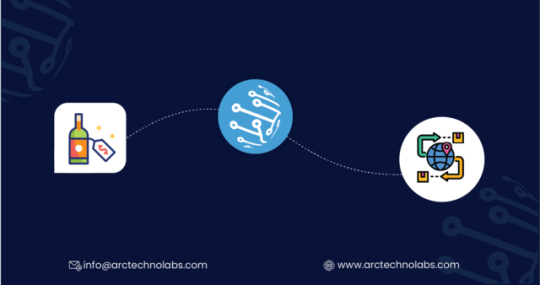
Introduction
In an era where consumer preferences and global trade dynamics shift rapidly, understanding real-time wine pricing trends is crucial for businesses in the alcohol industry. Web scraping wine pricing trends has become a powerful solution for importers, distributors, sommeliers, and wine retailers seeking a data-driven edge in global markets.
By using advanced tools to Scrape Alcohol Price Data Intelligence, professionals can access updated price listings, market fluctuations, regional demand patterns, and promotional pricing—helping them make smarter procurement and pricing decisions.
The Role of Data in the Wine Industry
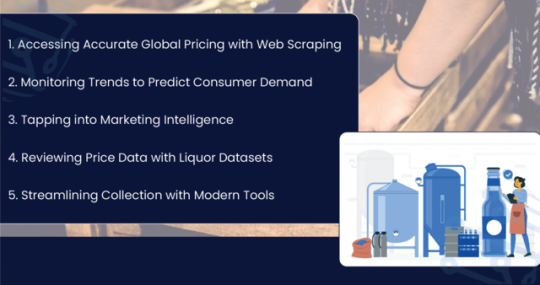
The global wine industry is driven by intricate factors—vintage, region, availability, and seasonal consumption—that impact pricing and demand. As the market becomes more competitive and digitalized, businesses can no longer afford to rely on outdated reports or manual tracking. Instead, they are turning to Web Scraping Services and intelligent tools to gather real-time insights, allowing them to stay agile and data-informed in a fluctuating industry.
1. Accessing Accurate Global Pricing with Web Scraping
One of the biggest advantages of using Web scraping wine pricing trends is the ability to collect pricing data across various geographies. Importers, distributors, and sommeliers can monitor price shifts for specific varietals in real time.
Example Stats: Average Retail Wine Prices (2020–2025)
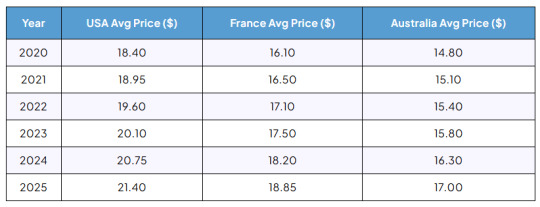
2. Monitoring Trends to Predict Consumer Demand
By using a Wine industry data scraper tool, businesses can Analyze wine sales trends 2025 to predict seasonal demand patterns and adjust inventories accordingly.
Example Stats: Seasonal Sales Growth (%) by Quarter (2020–2025)
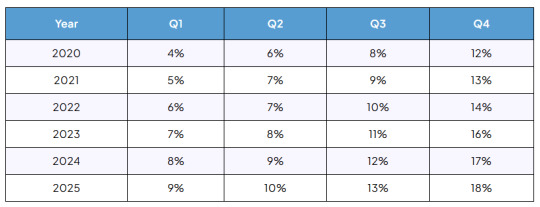
3. Tapping into Marketing Intelligence
Advanced scrapers can Extract wine marketing data such as promotional offers, product descriptions, and regional campaigns from online retailers. This can be especially helpful for crafting hyper-targeted campaigns.
Example: Marketing Mentions by Region (2025)

4. Reviewing Price Data with Liquor Datasets
With access to Liquor or Alcohol Price Review Datasets , stakeholders can monitor long-term price trends, promotional impacts, and regional differentials to plan bulk orders or adjust their retail pricing strategies.
Example: Price Variation for Red Wines (2020–2025)
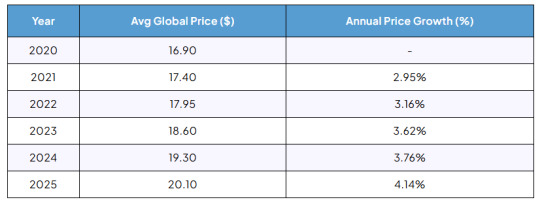
5. Streamlining Collection with Modern Tools
Businesses now employ Web Scraping Liquor or Alcohol Data technologies such as Web Scraping API Services and Mobile App Scraping Services to automatically Scrape wine sales data 2025 and retrieve structured insights without maintaining manual workflows.
Using these tools, companies can Scrape Alcohol Price Data Intelligence directly from marketplaces, apps, and eCommerce stores in real time—enhancing agility and responsiveness.
By investing in smart solutions like Web scraping wine pricing trends, companies gain a competitive advantage through accurate forecasting, better marketing strategies, and optimized purchasing. Data is no longer optional in the wine trade—it's your most valuable asset.
Key Benefits of Web Scraping Wine Pricing Trends

1. Global Price Benchmarking
With Web scraping wine pricing trends, importers can benchmark prices across countries and retailers. This helps in identifying profitable sourcing regions and preventing overpricing in local markets.
Example:

2. Sales Forecasting and Demand Planning
Distributors can Analyze wine sales trends 2025 by combining pricing data with seasonal sales activity. This helps forecast stock requirements and optimize distribution.
Example:

3. Retailer and Competitor Analysis
Using a Wine industry data scraper tool, sommeliers and retailers can monitor top-performing SKUs, limited-edition releases, and pricing strategies of competitors.
Example:

4. Extracting Marketing Insights
Professionals can Extract wine marketing data from promotional banners, discount listings, and regional campaigns. This intelligence can guide more effective marketing and ad targeting.
5. Mobile App Data Insights
Many wine retailers now offer mobile-exclusive deals and flash sales. Through Mobile App Scraping Services, businesses can collect this app-specific data and integrate it into pricing models for more competitive offerings.
Tools Used in Scraping Alcohol Data
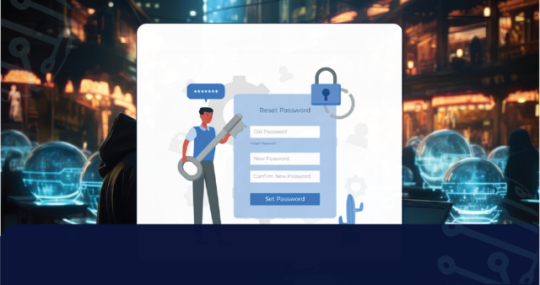
As the global wine and liquor industry shifts toward data-driven strategies, businesses increasingly rely on robust tools specifically designed for Web Scraping Liquor or Alcohol Data and compiling Liquor or Alcohol Price Review Datasets. These tools must be capable of handling dynamic content, JavaScript-rendered pricing modules, and anti-bot mechanisms such as CAPTCHA and IP restrictions.
Modern Web Scraping Services employ scalable and flexible infrastructures to crawl thousands of wine and liquor product pages daily. Whether it's eCommerce platforms, regional distributor websites, or global wine trading portals, these tools ensure high data accuracy and consistency.
To Scrape wine sales data 2025 effectively, companies integrate Web Scraping API Services to fetch real-time pricing, availability, and promotional information. APIs ensure continuous, structured delivery of data, enabling wine importers and marketers to Analyze wine sales trends 2025 and react quickly to shifting market conditions.
In addition, Mobile App Scraping Services are used to extract pricing and offer-related content from liquor and wine delivery apps—many of which feature app-exclusive rates or localized offers not visible on web portals.
Advanced Wine industry data scraper tools not only collect data but also normalize and clean it, enabling organizations to Extract wine marketing data efficiently for analytics dashboards, CRM systems, or pricing intelligence platforms. These tools help businesses Scrape Alcohol Price Data Intelligence from multi-language and multi-currency platforms with high accuracy.
By leveraging the power of Web scraping wine pricing trends, companies in the liquor and wine space gain a competitive edge—ensuring they stay ahead of pricing shifts, seasonal fluctuations, and consumer demand in every region.
ArcTechnolabs integrates these modern tools with precision to deliver actionable insights from global alcohol data sources.
Why Choose ArcTechnolabs?
At ArcTechnolabs, we offer end-to-end Web Scraping Services tailored specifically to the wine and alcohol industry. Our expertise includes building powerful Wine industry data scraper tools designed for both global and regional coverage. We provide robust Web Scraping API Services that automate real-time data delivery, ensuring you have access to the most up-to-date information at all times. Our Mobile App Scraping Services are fully scalable, enabling you to access exclusive pricing and promotional data often locked behind mobile platforms.
We also utilize advanced scraping techniques to extract data from JavaScript-heavy websites and protected sources, overcoming typical scraping challenges like CAPTCHAs and geo-restrictions. For businesses looking to make informed decisions, we deliver custom dashboards and analytics tools that help you Analyze wine sales trends 2025 effortlessly.'
Whether you want to Scrape BookMyShow movie ticket data today or Scrape Alcohol Price Data Intelligence tomorrow, ArcTechnolabs builds flexible, industry-specific scraping solutions that evolve with your business goals.
Conclusion
The global wine market is rich in opportunity—but only for those who stay informed. By leveraging Web scraping wine pricing trends, importers and sommeliers gain the competitive advantage needed to forecast accurately, price competitively, and market intelligently. With ArcTechnolabs as your data partner, you can transform fragmented online wine listings into actionable intelligence that fuels your business success. Ready to unlock real-time wine pricing insights? Contact ArcTechnolabs today for a custom scraping solution built for your market!
Source >> https://www.arctechnolabs.com/wine-pricing-data-scraping-global-trends.php
🚀 Fuel your growth with real-time data! 📩 [email protected] | 📞 +1 424 377 7584 ArcTechnolabs – Data that drives decisions.
#WebScrapingWinePricingTrends#ScrapeAlcoholPriceDataIntelligence#LiquorOrAlcoholPriceReviewDatasets#ExtractWineMarketingData#WebScrapingLiquorOrAlcoholData#WebScrapingAPIServices#ArcTechnolabs
0 notes
Text
Extract product data from The Hut using ScrapeStorm
The Hut is a diversified online retailer that sells fashion, beauty, home, electronics, sporting goods, toys and more. This allows consumers to purchase a variety of goods on one platform.
Introduction to the scraping tool
ScrapeStorm is a new generation of Web Scraping Tool based on artificial intelligence technology. It is the first scraper to support both Windows, Mac and Linux operating systems.
Preview of the scraped result
Export to Excel:

1. Create a task
(1) Copy the URL

(2) Create a new smart mode task
You can create a new scraping task directly on the software, or you can create a task by importing rules.
How to create a smart mode task

2. Configure the scraping rules
Smart mode automatically detects the fields on the page. You can right-click the field to rename the name, add or delete fields, modify data, and so on.

3. Set up and start the scraping task
(1) Run settings
Choose your own needs, you can set Schedule, IP Rotation&Delay, Automatic Export, Download Images, Speed Boost, Data Deduplication and Developer.

(2)Wait a moment, you will see the data being scraped.

4. Export and view data

(2) Choose the format to export according to your needs.
ScrapeStorm provides a variety of export methods to export locally, such as excel, csv, html, txt or database. Professional Plan and above users can also post directly to wordpress.
How to view data and clear data
How to export data
0 notes
Text
Extract Amazon Product Prices with Web Scraping | Actowiz Solutions
Introduction
In the ever-evolving world of e-commerce, pricing strategy can make or break a brand. Amazon, being the global e-commerce behemoth, is a key platform where pricing intelligence offers an unmatched advantage. To stay ahead in such a competitive environment, businesses need real-time insights into product prices, trends, and fluctuations. This is where Actowiz Solutions comes into play. Through advanced Amazon price scraping solutions, Actowiz empowers businesses with accurate, structured, and actionable data.
Why extract Amazon Product Prices?

Price is one of the most influential factors affecting a customer’s purchasing decision. Here are several reasons why extracting Amazon product prices is crucial:
Competitor Analysis: Stay informed about competitors’ pricing.
Dynamic Pricing: Adjust your prices in real time based on market trends.
Market Research: Understand consumer behavior through price trends.
Inventory & Repricing Strategy: Align stock and pricing decisions with demand.
With Actowiz Solutions’ Amazon scraping services, you get access to clean, structured, and timely data without violating Amazon’s terms.
How Actowiz Solutions Extracts Amazon Price Data

Actowiz Solutions uses advanced scraping technologies tailored for Amazon’s complex site structure. Here’s a breakdown:
1. Custom Scraping Infrastructure
Actowiz Solutions builds custom scrapers that can navigate Amazon’s dynamic content, pagination, and bot protection layers like CAPTCHA, IP throttling, and JavaScript rendering.
2. Proxy Rotation & User-Agent Spoofing
To avoid detection and bans, Actowiz employs rotating proxies and multiple user-agent headers that simulate real user behavior.
3. Scheduled Data Extraction
Actowiz enables regular scheduling of price scraping jobs — be it hourly, daily, or weekly — for ongoing price intelligence.
4. Data Points Captured
The scraping service extracts:
Product name & ASIN
Price (MRP, discounted, deal price)
Availability
Ratings & Reviews
Seller information
Real-World Use Cases for Amazon Price Scraping

A. Retailers & Brands
Monitor price changes for own products or competitors to adjust pricing in real-time.
B. Marketplaces
Aggregate seller data to ensure competitive offerings and improve platform relevance.
C. Price Comparison Sites
Fuel your platform with fresh, real-time Amazon price data.
D. E-commerce Analytics Firms
Get historical and real-time pricing trends to generate valuable reports for clients.
Dataset Snapshot: Amazon Product Prices

Below is a snapshot of average product prices on Amazon across popular categories:
Product CategoryAverage Price (USD)Electronics120.50Books15.75Home & Kitchen45.30Fashion35.90Toys & Games25.40Beauty20.60Sports50.10Automotive75.80
Benefits of Choosing Actowiz Solutions

1. Scalability: From thousands to millions of records.
2. Accuracy: Real-time validation and monitoring ensure data reliability.
3. Customization: Solutions are tailored to each business use case.
4. Compliance: Ethical scraping methods that respect platform policies.
5. Support: Dedicated support and data quality teams
Legal & Ethical Considerations

Amazon has strict policies regarding automated data collection. Actowiz Solutions follows legal frameworks and deploys ethical scraping practices including:
Scraping only public data
Abiding by robots.txt guidelines
Avoiding high-frequency access that may affect site performance
Integration Options for Amazon Price Data

Actowiz Solutions offers flexible delivery and integration methods:
APIs: RESTful APIs for on-demand price fetching.
CSV/JSON Feeds: Periodic data dumps in industry-standard formats.
Dashboard Integration: Plug data directly into internal BI tools like Tableau or Power BI.
Contact Actowiz Solutions today to learn how our Amazon scraping solutions can supercharge your e-commerce strategy.Contact Us Today!
Conclusion: Future-Proof Your Pricing Strategy
The world of online retail is fast-moving and highly competitive. With Amazon as a major marketplace, getting a pulse on product prices is vital. Actowiz Solutions provides a robust, scalable, and ethical way to extract product prices from Amazon.
Whether you’re a startup or a Fortune 500 company, pricing intelligence can be your competitive edge. Learn More
#ExtractProductPrices#PriceIntelligence#AmazonScrapingServices#AmazonPriceScrapingSolutions#RealTimeInsights
0 notes